1954 NATO nations agree to arm and admit West Germany.
1950 U.N. forces cross the 38th parallel separating North and
South Korea as they pursue the retreating North Korean Army.
1949 The Berlin Airlift ends.
^top^
By it the US and Great Britain
kept Berlin supplied against a Russian blockade. It comes to
an end after 15 months and 277'264 flights which carried 2'323'738
tons of supplies.
The airlift was one of the greatest
logistical feats in modern history and was one of the crucial
events of the early Cold War. In June 1948, the Soviet Union
suddenly blocked all ground traffic into West Berlin, which
was located entirely within the Russian zone of occupation in
Germany. It was an obvious effort to force the United States,
Great Britain, and France (the other occupying powers in Germany)
to accept Soviet demands concerning the postwar fate of Germany.
As a result of the Soviet blockade, the people of West Berlin
were left without food, clothing, or medical supplies.
Some US officials pushed for
an aggressive response to the Soviet provocation, but cooler
heads prevailed and a plan for an airlift of supplies to West
Berlin was developed. It was a daunting task: supplying the
daily wants and needs of so many civilians would require tons
of food and other goods each and every day. On 26 June 1948,
the Berlin Airlift began with US pilots and planes carrying
the lion's share of the burden. During the next 15 months, 277'264
aircraft landings in West Berlin brought over 2 million tons
of supplies. On 30 September 1949, the last plane — a US
C-54 — landed in Berlin and unloaded over two tons of coal.
Even though the Soviet blockade officially ended in May 1949,
it took several more months for the West Berlin economy to recover
and the necessary stockpiles of food, medicine, and fuel to
be replenished.
The Berlin Airlift was a tremendous
Cold War victory for the United States. Without firing a shot,
the Americans foiled the Soviet plan to hold West Berlin hostage,
while simultaneously demonstrating to the world the "Yankee
ingenuity" for which their nation was famous. For the Soviets,
the Berlin crisis was an unmitigated disaster. The United States,
France, and Great Britain merely hardened their resolve on issues
related to Germany, and the world came to see the Russians as
international bullies, trying to starve innocent citizens. |
1946:: 22 Nazi leaders are found guilty of war crimes, Von Ribbentrop
and Goering sentenced to death, by Nuremberg trial.
1944 Calais reoccupied by Allies
1943 Pius XII issues the encyclical Divino
Afflante Spiritu, which urges more use of textual criticism among
Roman Catholic scholars and more emphasis on the historical background
. One of the long-term effects of this encyclical was the publication
in 1970 of the New American Bible.
1943 The Women's Army Auxiliary Corps becomes the Women's Army
Corps, a regular contingent of the US Army with the same status as
other army service corps.
1941 3721 Jews are buried alive at Babi Yar ravine (near Kiev)
U 1939 The French Army is called back into France from its invasion
of Germany. The attack, code named Operation Saar, only penetrated 8
km.
1939 Germany & Russia agree to partition Poland.
1939 Nouveau gouvernement polonais formé à Paris. Président :
Raczkiewicz ; Premier ministre : Sikorski.
1938 British Prime Minister
promises "Peace in our times"
In the summer of 1938, British
Prime Minister Neville Chamberlain made three trips to Germany
in an effort to avert war with Nazi leader Adolf Hitler. In
the early morning hours of 30 September 1938, Chamberlain and
French Prime Minister Edouard Daladier signed the Munich Pact
with Hitler and Italy, thus giving Czechoslovakia away to German
conquest. Daladier abhorred this appeasement of the Nazis, but
Chamberlain was elated. Later that day, the British prime minister
flew home to Britain, where he declared before a jubilant crowd
in London that the Munich Pact brought "peace in our time."
The next day, Germany would annex
Czechoslovakia's Sudetenland, and by March of 1939, nearly all
of Czechoslovakia was under German control. Eleven months later,
Hitler invaded Poland, and, "our time" ended, Chamberlain
solemnly called for a declaration of war.
Adolf Hitler, Benito Mussolini,
French Premier Edouard Daladier, and British Prime Minister
Neville Chamberlain sign the Munich Pact, which seals the fate
of Czechoslovakia, virtually handing it over to Germany in the
name of peace. Upon return to Britain, Chamberlain would declare
that the meeting had achieved "peace in our time."
Although the agreement was to
give into Hitler's hands only the Sudentenland, that part of
Czechoslovakia where 3 million ethnic Germans lived, it also
handed over to the Nazi war machine 66% of Czechoslovakia's
coal, 70% of its iron and steel, and 70% of its electrical power.
It also left the Czech nation open to complete domination by
Germany. In short, the Munich Pact sacrificed the autonomy of
Czechoslovakia on the altar of short-term peace — very short
term.
The terrorized Czech government
was eventually forced to surrender the western provinces of
Bohemia and Moravia (which became a “protectorate”
of Germany) and finally Slovakia and the Carpathian Ukraine.
In each of these partitioned regions, Germany set up puppet,
pro-Nazi regimes that served the military and political ends
of Adolf Hitler. By the time of the invasion of Poland in September
1939, the nation called "Czechoslovakia" no longer existed.
It was Neville Chamberlain who
would be best remembered as the champion of the Munich Pact,
having met privately with Hitler at Berchtesgaden, the dictator's
mountaintop retreat, before the Munich conference. Chamberlain,
convinced that Hitler's territorial demands were not unreasonable
(and that Hitler was a "gentleman"), persuaded the French to
join him in pressuring Czechoslovakia to submit to the Fuhrer's
demands. Upon Hitler's invasion of Poland a year later, Chamberlain
was put in the embarrassing situation of announcing that a "state
of war" existed between Germany and Britain.
By the time Hitler occupied Norway
and Denmark, Chamberlain was finished as a credible leader.
"Depart, I say, and let us have done with you!" one member of
Parliament said to him, quoting Oliver Cromwell. Winston Churchill
would succeed him as prime minister soon afterwards.
In the spring of 1938, Hitler
began openly to support the demands of German-speakers living
in the Sudeten region of Czechoslovakia for closer ties with
Germany. Hitler had recently annexed Austria into Germany, and
the conquest of Czechoslovakia was the next step in his plan
of creating a "greater Germany." The Czechoslovak government
hoped that Britain and France would come to its assistance in
the event of German invasion, but British Prime Minister Chamberlain
was intent on averting war. He made two trips to Germany in
September and offered Hitler favorable agreements, but the Führer
kept upping his demands. On 22 September Hitler demanded the
immediate cession of the Sudetenland to Germany and the evacuation
of the Czechoslovak population by the end of the month. The
next day, Czechoslovakia ordered troop mobilization. War seemed
imminent, and France began a partial mobilization on 24 September.
Chamberlain and French Prime
Minister Daladier, unprepared for the outbreak of hostilities,
traveled to Munich, where they gave in to Hitler's demands on
30 September. Daladier abhorred the Munich Pact's appeasement
of the Nazis, but Chamberlain was elated and even stayed behind
in Munich to sign a single-page document with Hitler that he
believed assured the future of Anglo-German peace. Later that
day, Chamberlain flew home to Britain, where he addressed a
jubilant crowd in London and praised the Munich Pact for bringing
"peace with honor" and "peace in our time." The next day, Germany
annexed the Sudetenland, and the Czechoslovak government chose
submission over destruction by the German Wehrmacht. In March
1939, Hitler annexed the rest of Czechoslovakia, and the country
ceased to exist. On 01 September 1939, 53 German army divisions
invaded Poland despite British and French threats to intervene
on the nation's behalf. Two days later, Chamberlain solemnly
called for a British declaration of war against Germany, and
World War II began. After eight months of ineffectual wartime
leadership, Chamberlain was replaced as prime minister by Winston
Churchill. |
1929 First manned rocket plane flight (by auto maker Fritz von
Opel)
1928 Leon Vanderstuyft of Belgium cycles record 76 mi 604 yds
in 1 hr
1918 Bulgaria pulls out of World War I.
1912 General
mobilization in Bulgaria, as war with Turkey threatens
1911 Italy declares war on Turkey over control of Tripoli.
1901 Car registration in France
Compulsory car registration for
all vehicles driving over 30 km/h takes effect throughout France
on this day, as more and more countries began regulating automobile
traffic. Early city roads were often a din of crowded chaos,
streets mired in mud and shared by horses, cars, and streetcars.
However, phenomenal increases in traffic and accidents brought
an end to the laissez-fare attitude of the road. Nine years
after France began its registration policy, dividing lines appeared,
followed by traffic signs, traffic lights, and one-way streets.
|
1895 France proclaims a protectorate over Madagascar
1889 Right to vote for Wyoming
women
The Wyoming state convention
approves a constitution that includes a provision granting women
the right to vote. Formally admitted into the union the following
year, Wyoming thus became the first state in the history of
the nation to allow its female citizens to vote. That the isolated
western state of Wyoming should be the first to accept women's
suffrage was a surprise. Leading suffragists like Susan B. Anthony
and Elizabeth Cady Stanton were Easterners, and they assumed
that their own more progressive home states would be among the
first to respond to the campaign for women's suffrage. Yet the
people and politicians of the growing number of new Western
states proved far more supportive than those in the East. In
1848, the legislature in Washington Territory became the first
to introduce a women's suffrage bill.
Though the Washington bill was
narrowly defeated, similar legislation succeeded elsewhere,
and Wyoming Territory was the first to give women the vote in
1869, quickly followed by Utah Territory (1870) and Washington
Territory (1883). As with Wyoming, when these territories became
states they preserved women's suffrage.
By 1914, the contrast between
East and West had become striking. All of the states west of
the Rockies had women's suffrage, while no state did east of
the Rockies, except Kansas. Why the regional distinction? Some
historians suggest western men may have been rewarding pioneer
women for their critical role in settling the West. Others argue
the West had a more egalitarian spirit, or that the scarcity
of women in some western regions made men more appreciative
of the women who were there while hoping the vote might attract
more.
Whatever the reasons, while the
Old West is usually thought of as a man's world, a wild land
that was "no place for a woman," Westerners proved far more
willing than people in other parts of the US to create states
where women were welcomed as full and equal citizens. |
1887 Start of the Sherlock Holmes Adventure The
Five Orange Pips
1885 Bechuanaland becomes a British protectorate
1867 Midway Islands declared a US possession
1864 Battle of Fort Harrison (Chaffin's Farm), Virginia concludes.
Confederate troops fail to retake Fort Harrison from the Union forces
during the siege of Petersburg.
1864 Skirmish at Carter's Station, Tennessee
1857 US occupies Sand, Baker, Howland, and Jarvis Islands south
of Hawaii.
1847 An environmentalist ahead
of his time. ^top^
Congressman George
Perkins Marsh delivers an
address on agricultural conditions in New England to the
Agricultural Society of Rutland County, Vermont. This powerful
address gave voice to ideas which would become a catalytic force
in the conservation movement. Marsh recognized the human capacity
for destruction of the environment and advocated better management
of resources and active efforts toward restoration of the land,
radical ideas for the period. |
1846 Anesthetic ether used for the first time: The first anesthetized
tooth extraction is performed by Dr. William Morton in Charleston, Massachusetts,
at Massachusetts General Hospital.
1777 US Congress flees to York, Pennsylvania, as British forces
advance
1792 French revolution orders evacuation of Fontevrault abbey.
1751 Phillip Doddridge, clergyman and author of the influential
book The Rise and Progress of Religion in the Soul sails from
Falmouth for a warmer climate in the hope of recovering from consumption.
He dies a month later.
1659 Robinson Crusoe is shipwrecked (according to Defoe)
1568 Eric XIV, king of Sweden, is deposed after showing signs
of madness.
1538 English Chancellor Thomas Cromwell, in Henry VIII's name,
imposes a new series of injunctions against the clergy.
1399 Henry IV proclaimed king
^top^
Henry Bolingbroke was proclaimed
King Henry IV of England, the day after King Richard II abdicated
the throne in his favor. Henry had returned unopposed from a
one-year exile, and seized the throne with the support of England's
nobility. Richard, who had forced Henry's exile the year before,
was greatly weakened by internal conflicts stemming from quarrels
with Parliament and criticism of his assassinations of political
opponents. Upon becoming king of England, Henry imprisoned Richard
in Pontefract Castle in Yorkshire, where the former king died
of undetermined causes in the following year.
Henry was the eldest surviving
son of John of Gaunt, duke of Lancaster. While his father was
away in Spain, Henry joined other lords in opposing King Richard
II's rule. Richard later regained the upper hand and in 1398
banished Henry from the kingdom. When John of Gaunt died in
February 1399, Richard seized the Lancastrian estates, thus
depriving Henry of his inheritance. Claiming to be defending
the rights of the nobility, Henry invaded England in July 1399,
and Richard surrendered to him without a fight in August.
Upon becoming king of England,
Henry imprisoned Richard in Pontefract Castle in Yorkshire,
where the former king died of undetermined causes in February
1400. After a turbulent reign, Henry was succeeded by his son
Henry V, the second of England's three Lancastrian kings. |
0313 Sessions open on the North African question in the house
of Constantine's wife; these confirm Caecilian and condemn Donatus.
|
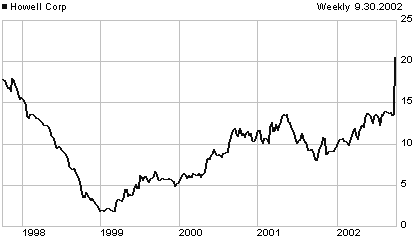 On
a 30 September:
On
a 30 September: 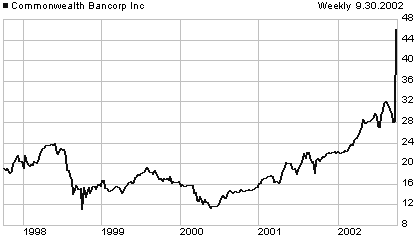
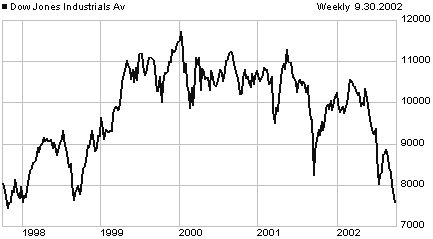
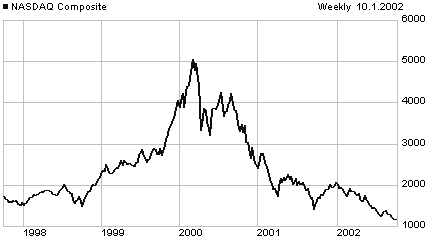 [< 5~year price chart]
[< 5~year price chart]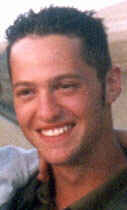 Deaths
Deaths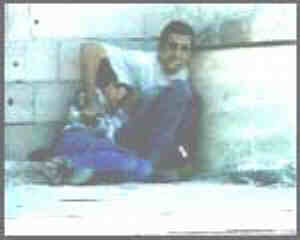 Mother
saw on TV her little boy shot to death (from
Mother
saw on TV her little boy shot to death (from 
